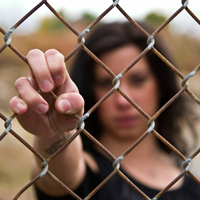WHAT IS THE CONCEPT?
An ethicist Andrew Jameton, in 1984, created the term “moral distress” which he defined as arising “when one knows the right thing to do, but institutional constraints make it nearly impossible to pursue the right course of action.” In general, moral distress is understood as relating to uncomfortable feelings or psychological upset that arises when what a professional perceives as his or her morally appropriate action cannot be carried out due to institutional obstacles or other impediments.
Moral distress needs to be distinguished from the concept of ethical dilemmas which is extensively used in social work. Ethical dilemmas concern two or more courses of action which are in conflict (and will potentially have both positive and negative consequences) but where each action can be defended as viable and appropriate. In contrast, with moral distress, one action is preferred and seen as morally superior by the individual, but that person feels blocked from enacting that action by factors outside of the self.
The concept of moral distress identifies that sometimes workers do not fulfill an ethical stance they would like to take. Furthermore that there are psychological ramifications when there is a disjuncture between what one wishes to do professionally and what one enacts, and those effects can remain.
AN EXAMPLE
A school social worker is instructed she cannot provide birth control counselling or discuss the use of condoms to prevent HIV/AIDS because she is working for the Catholic School Board. She is not Catholic, and believes the right thing to do is the offer this service to a particular student but feels constrained due to the policies of the Board and the religious orientation of the school – positions which she was acutely aware of from her job interview.
WHY IS IT USEFUL FOR PROFESSIONALS IN THE HELPING FIELDS?
Moral distress emphasizes the struggle between personal and professional values and expectations. This notion lends itself to an examination of the status and interests of players in an organization that sometimes overrules issues of principle. Moral distress involves perception of moral accountability, a key component in working towards social justice. Conversely, the notion of ethical dilemma does not specifically address the political responsibility of social workers to be change agents of unjust or inadequate situations that maintain the marginalization of their clients.
Moral distress also relates to the internal psychological dynamics of the individual worker. As professions committed to the psychological health of people, there is an irony that the emotional well-being of providers is not adequately addressed through the use of a concept of moral distress in the literature of many of the helping disciplines. Since, putting language to a situation or feeling by identifying a concept contributes to its ‘truth’; naming moral distress which recognizes that there is an emotional toll to ethical work could be validating and comforting to the school social worker.
It would also be significant to add the concept of moral distress to the arsenal of social service theorizing because it recognizes the importance of context in ethical action. The field of ethics is broader than the individual worker-client relationship and is significantly molded by structures and institutions that are greater than the individual practitioner even while those very practitioners influence and shape the structures in a reciprocal process. For the school social worker, this concept puts the spot-light on a structural dimension in her work broadening what is viewed as an ethical concern. She might, for example, decide that she needs to work towards a policy change, even though her primary responsibilities are front-line.
Other analytical tools: Ethical Trespass, Discursive Fields, Preferred and Actualized Selves.

